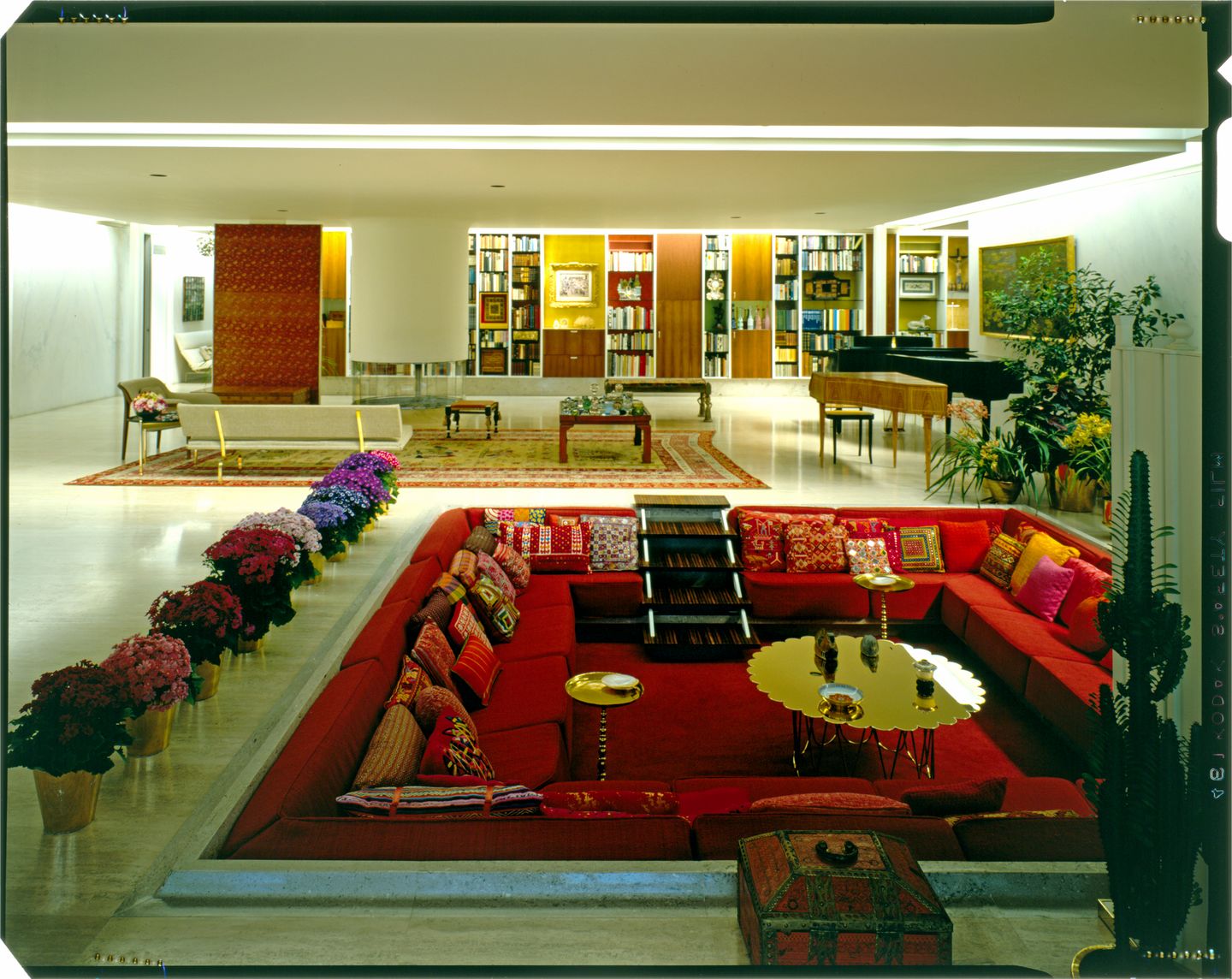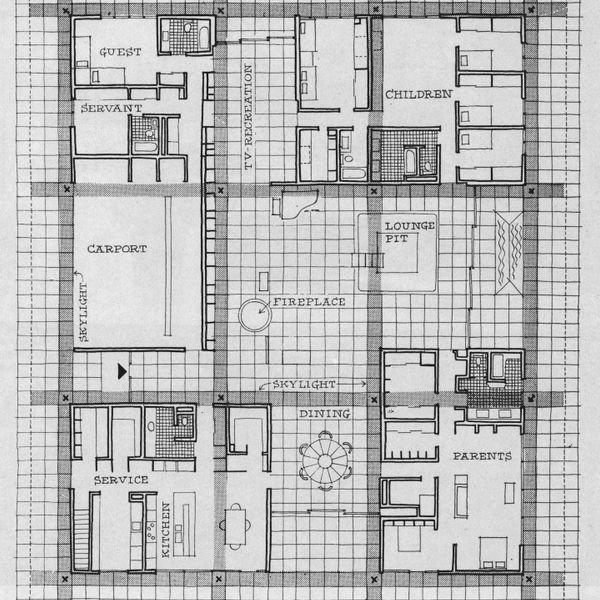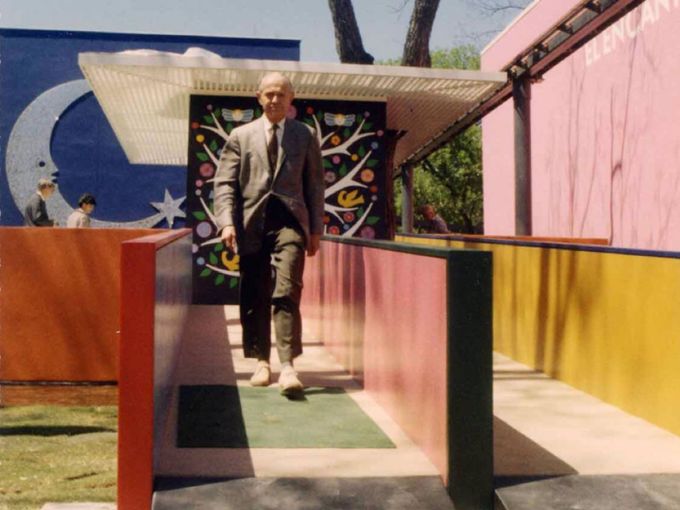A Pit for Conversation
A Vitra Anecdote

In 1952, the modern architecture patron J. Irwin Miller and his wife Xenia commissioned a remarkable modernistic trio of architects to create their private residence in Columbus, Indiana. The Miller House was designed by Eero Saarinen, the landscape by Daniel Urban Kiley, while Alexander Girard masterminded the interior.
The residence was created in close collaboration with the Miller family. As an architect and textile designer, Alexander Girard used his talents to transform the bright open interior into the warm and intimate atmosphere of a welcoming home. The house, landscape and interior were completed in 1957. Girard had become a dear friend of the family by then and continued to be an enduring part of the Millers’ life over the decades.
For the Miller House, Alexander Girard designed a vivid range of patterned curtains and several rugs for the floors, including an abstract design for the dining room and another with graphic motifs representing family history and interests for the television area. Girard also designed custom patterns for seat covers featuring the initials of each member of the family, which were personally embroidered by Xenia Miller and her friends.
For the interior furnishings and accessories, Girard mixed his own designs with selected folk art and works by blue-chip artists such as Claude Monet and incorporated an array of customised furniture.
For the interior furnishings and accessories, Girard mixed his own designs with selected folk art and works by blue-chip artists such as Claude Monet and incorporated an array of customised furniture.


Alexander Girard influenced the Millers’ approach to living. The absolute centrepiece of the house was an unexpected sunken lounge lined with stone, fitted with cushions and adorned with a striking symphony of coloured pillows. The pit was accessed by four steps, with no railing.
The conversation pit was intended to encourage socialising without marring the flow of the room with furniture legs. Descending into a dedicated space for conversation added a whole new dimension to the interaction with guests, both physically and socially. While not detracting from the decorum or propriety in any way, the conversation pit allowed for a more intimate space in which to converse and offered a new vantage point from which to take in the surrounding living area. Girard was extremely interested in creating new perspectives and the conversation pit was a perfect manifestation of this goal.
The conversation pit was intended to encourage socialising without marring the flow of the room with furniture legs. Descending into a dedicated space for conversation added a whole new dimension to the interaction with guests, both physically and socially. While not detracting from the decorum or propriety in any way, the conversation pit allowed for a more intimate space in which to converse and offered a new vantage point from which to take in the surrounding living area. Girard was extremely interested in creating new perspectives and the conversation pit was a perfect manifestation of this goal.


The pillows and slipcovers were changed seasonally to enrich the experience for guests, with cooler hues being employed in the warmer months. Fabrics from all over the world in a diverse range of colours and textures created a global backdrop for many an evening with friends. Thick embroidery from Mexico, delicate silks from Japan, mirrored cotton from India and of course many of Girard’s own fabrics as well. The rich colours and textures not only created a stunning visual display, they also represented the ongoing theme of human connection in Girard’s work.
Today the Miller House in Columbus, Indiana, is one of the most highly regarded examples of mid-century Modernist residences. The home and garden complex was declared a National Historical Landmark in 2000 and is open to the public through the Indianapolis Museum of Art.
Today the Miller House in Columbus, Indiana, is one of the most highly regarded examples of mid-century Modernist residences. The home and garden complex was declared a National Historical Landmark in 2000 and is open to the public through the Indianapolis Museum of Art.
Publication Date: 12.4.2016
Author: Aleishall Girard, Stine Liv Buur
Images: Miller House, Columbus, Indiana, 1953-57. Wohnzimmer, Gesprächsgrube. Balthazar Korab, courtesy of The Library of Congress; Stoffdesigntafel von Alexander Girard für das Miller House, ca. 1956, Miller House and Garden Collection, Indianapolis Museum of Art Archives.








